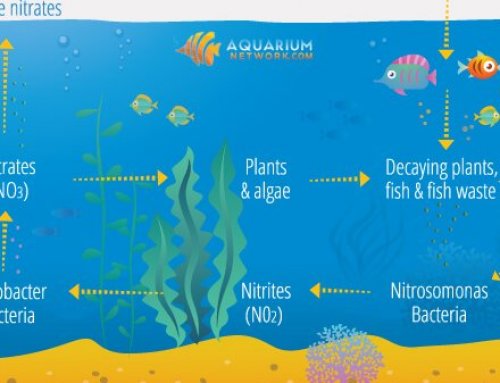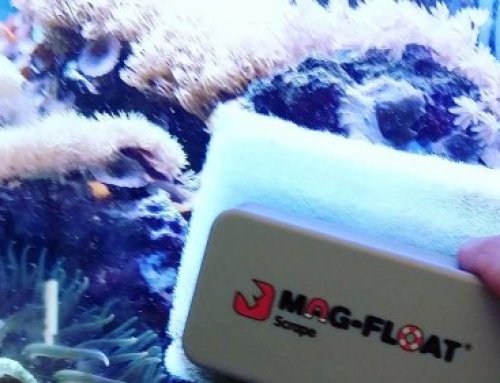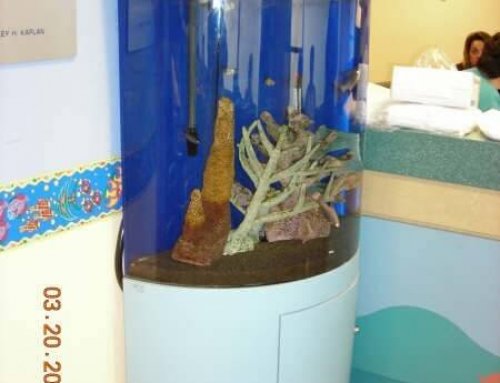Bacterial Diseases in Freshwater Fish
Bacterial diseases in freshwater fish are some of the most commonly found disease problems in aquariums although they are also some of the most preventable. Environmental stressors such as poor water quality and improper handling are almost always the cause of bacterial disease outbreaks. In this article, we are going to look at some of the common bacterial diseases, treatment options, and prevention methods to lower the risk of your fish becoming infected.
Columnaris
Columnaris (Flavobacterium columnare) is a common bacteria found in almost every aquarium. It is commonly referred to as saddleback because it can cause a depigmented zone on the back of infected fish that resembles a saddle. Other symptoms include ulcers, grayish or yellow patches on the gills, and white patches around the mouth. At the first sign of this disease, antibiotics should be administered. Although columnaris lives in almost all freshwater aquariums, increasing the pH and Hardness can help to decrease its survival in your water. We suggest adding an AQUARIUM SALT and trying to lower the temperature to as low as 75 degrees.
Fin Rot
Fin rot is caused by several different types of bacteria. This disease usually presents itself when fish are stressed, causing the fins to become eroded, opaque, and inflamed. The base of the fin can also become red and streaks of blood can appear along the side of the fins. Other bacterial diseases can also attack the fish once this disease is present so it is important to identify and treat it as soon as possible. Fin rot can be treated with antibiotics although it is important to identify what caused the fish to become stressed in the first place. Follow the directions on a bottle of MELAFIX and your fish should quickly show signs of fin repair.
Bacterial Gill Disease
Bacterial gill disease is typically caused by high ammonia and low oxygen conditions in the water, leading to gill hyperplasia (proliferation) in the fish. This enlargement of the gills causes them to become more susceptible to bacteria, usually Flavobacterium branchiophilum and Cytophaga aquatilis. Swollen or clubbed gills and flared opercles are typical symptoms of bacterial gill disease. Changing your aquarium’s water frequently with unchlorinated water can help prevent the disease from occurring. Anti-bacterial solutions can also be used if you spot the disease infecting fish in your aquarium.
Furunculosis
Furunculosis is a bacterial disease caused by the bacteria Aeromonas salmonicida and is commonly found in salmonids and cyprinids. It is named for the furuncles or boil-like lesions that can develop on infected fish. They may also appear dark in coloration and have hemorrhaging at the base of their fins. Unlike some other bacteria, this one can live inside of the fish for years and won’t present itself until the fish is stressed, typically due to low oxygen conditions. Maintaining good oxygen levels and proper water quality is the best way to prevent this disease. Antibiotics can also be used to treat infected fish.
Dropsy
Dropsy is caused by a variety of different bacteria and can affect almost every species of fish. The main symptom is a distended abdomen that causes the scales to stand out. Dropsy is very hard to treat even when detected early. However, it is not highly infectious although dead fish should be removed immediately in order to prevent cannibalism.
Pseudomonas and Vibrio
Many bacterial diseases that occur in saltwater aquariums are caused by bacteria from the genus Pseudomonas and Vibrio. They can cause frayed fins with hemorrhaging at the base of the fin, sores, lethargy, and swelling of the belly. Since most healthy fish are able to resist infections from these two types of bacteria, the cause is usually attributed to stress from poor water quality. Infected fish should be quarantined and treated with antibiotics.
Antibiotics
Antibiotics are a common treatment for almost all bacterial diseases in fish, but they are not a cure. They simply help control the growth of the bacteria so the fish’s immune system can fight them off. Water quality issues and stress factors should be addressed first before antibiotics are used. It is important to note that not all antibiotics effectively treat every type of bacteria. Be sure to read the label before buying an antibiotic to ensure effective treatment of the bacterial disease that has infected your fish. The majority of antibiotic treatments for fish are anti-bacterial water additives or bath treatments. Medicated feeds are also available for certain species and bacteria. The most common and effective antibiotics are: MELAFIX or Tetra LifeGuard Tablets
.
Salt
Adding SALT to your water can be another way to help your freshwater fish fight off bacterial infections but care must be given because some fish cannot tolerate high levels of salinity. Salt can help the fish increase their production of antibodies, making bacteria more susceptible to antibiotics. Aquarium salt works best but sea or kosher salt can be used as well.
Water Quality
Poor water quality is one of the most common causes of fish stress and therefore one of the most common causes of bacterial infections. Having a proper filtration system for your aquarium is essential for reducing the threat of bacterial diseases. Cleaning your tank and changing your water frequently can also help ensure that you have proper water quality in your aquarium. Refrain from using old feed as it can be a carrier of bacterial agents.
The Takeaway
Antibiotics, salt, and quarantining infected fish are effective methods for treating bacterial disease outbreaks, but are not a cure. Maintaining proper water quality is the most important factor in preventing the outbreak of bacterial diseases. Paying close attention to your water quality and your fish’s behavior and appearance will help you to limit bacterial disease and mortality in your aquarium.
-Richard Bryant
contributor for Aquarium Network





